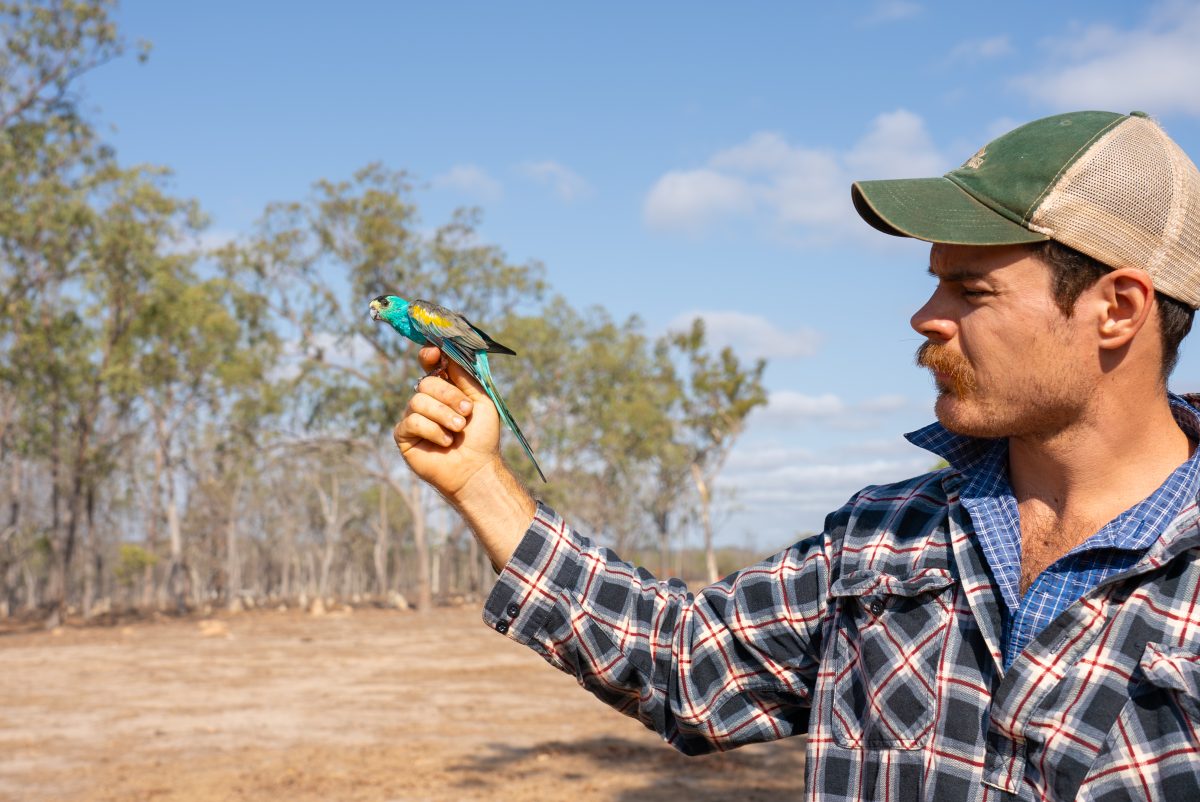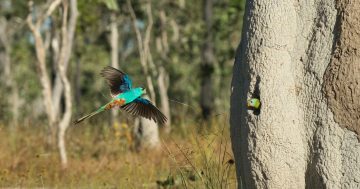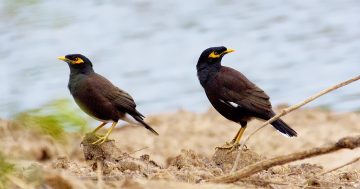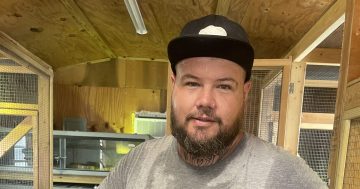
Patrick Webster shows off the charismatic golden-shouldered parrot. Photo: supplied.
One of Cape York’s most famous birds, the colourful golden-shouldered parrot, has now been listed as endangered for almost a quarter of a century, but a dedicated group of conservationists are doing their part to one day see it taken off the list.
The bird species, which was once widespread across Cape York Peninsula, has been on the endangered species list since 2000, and is currently reduced to two small populations at Artemis Station and Straaten River.
Artemis Nature Fund senior conservation officer Patrick Webster said Artemis Station was down to about 50 to 70 individual birds.
“It’s a species that is in urgent need of attention,” he said.
“With this really well-documented decline, it would be pretty naive to think that the decline would stop there.
“If we weren’t to do anything now, it’s probably a matter of decades before we could lose this species, so there’s that urgency,” he said.
Mr Webster said the golden-shouldered parrot’s popularity also helped other lesser-known bird species.
“The golden-shouldered parrot sort of acts as a bit of a flagship for the Cape York bird community,” the conservationist explained.
“There’s a whole range of specialist birds that you only find on Cape York, and the drivers of decline that are impacting the parrots are also impacting these other species, but they’re more or less secretive, drab birds which don’t receive a lot of attention.
“Here we have this really charismatic, absolutely magnificent bird, so it does attract a lot of attention.
“In a way, by protecting the parrots, we’re probably inadvertently looking after all the other species as well.”
In the 2023 breeding season, the Artemis team trialled a nest protection technique with small electric fences, which has been chalked up as hugely successful.
“We were observing a lot of nests that were getting predated by goannas and snakes, which are all natural predators,” Mr Webster said.
“However, when the population is so low, we really can’t afford to be losing that many nests.
“Since we started the trial, we haven’t lost any nests which had an electric barrier fence on it to ground based predators, so it’s showing a lot of promise.”
During the trial, the team only had three fences, which they rotated between various nesting sites.
“This upcoming breeding season, our ambition is to purchase more fencing gear, so that every nest we find, we can install the fences on and obviously have a much more successful breeding season and contribute even more baby parrots to the population,” he said.






